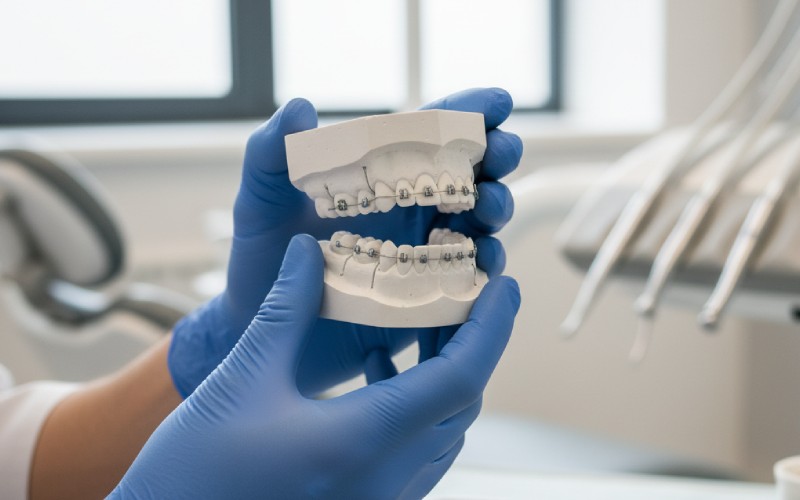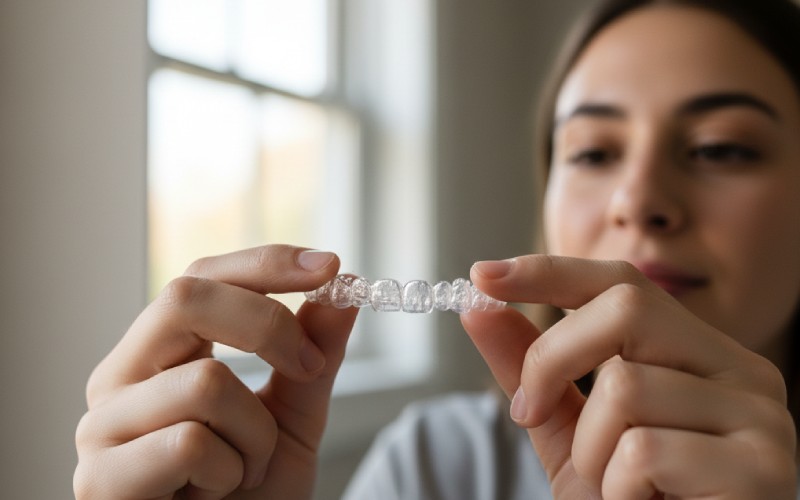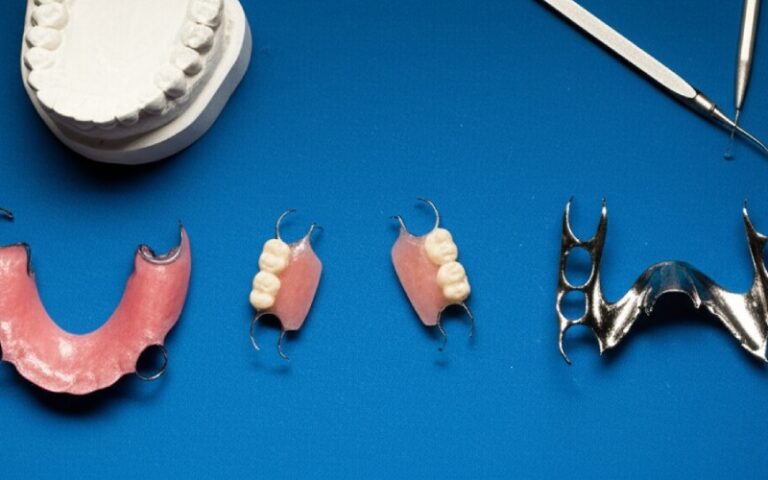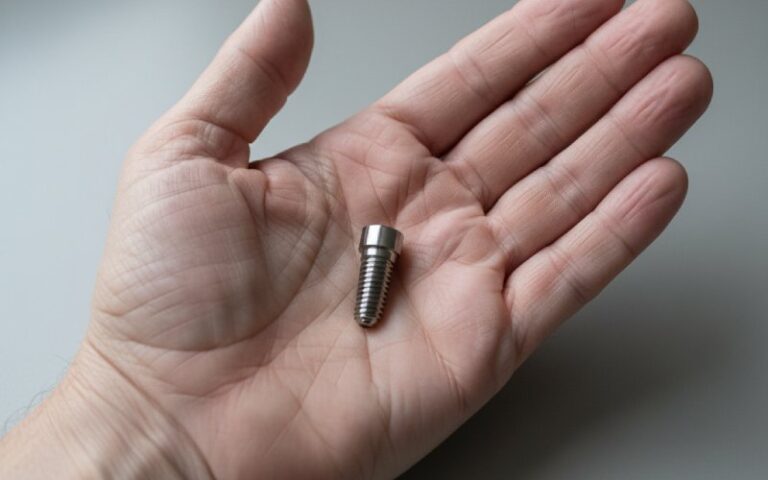
How Do Dentists Fix an Overbite? A Clear, Human Guide From First Visit to Final Smile
If you’ve been told you have an “overbite,” you’re not alone—and you’re not stuck with it. Today’s dentists, orthodontists, and surgeons can correct everything from a mild deep bite to a severe jaw mismatch, often more comfortably and discreetly than you might expect. Think of this as your practical roadmap: what overbite really means, who treats it, which options actually work, how long things take, and what day‑to‑day life looks like while you’re in treatment.
Table of Contents
Quick takeaways
- “Overbite” is vertical overlap (often called a deep bite). “Overjet” is the front‑to‑back distance (buck teeth). Many people mix them up; your dentist will check for both.
- Mild to moderate deep bites are often corrected with braces or clear aligners; predictability with aligners can be lower for deep bites, so refinements or braces may be advised.
- Severe, jaw‑related cases may need a team approach: orthodontics plus corrective jaw (orthognathic) surgery.
Most people have a small overbite—it helps your front teeth shear food. But when the overlap goes beyond roughly 2–4 mm, it can wear teeth, stress gums and joints, and make chewing or speaking less efficient. Your provider will confirm how much of your lower front teeth are covered and whether there’s also extra overjet. That distinction matters, because the best fix depends on which dimension is off (vertical, horizontal, or both).
- Signs you might benefit from correction
- Front teeth that cover too much of the lowers, jaw or muscle soreness, enamel wear or “chipping” on the front teeth, lip strain to close, or gum irritation behind the upper front teeth.
Who actually treats overbite? General dentists diagnose and often coordinate care; orthodontists specialize in moving teeth and guiding jaw growth; oral and maxillofacial surgeons step in when the jawbones themselves need repositioning. Simple tooth‑position problems can be handled with orthodontics alone; skeletal problems (jaw size or position) sometimes require surgery once growth is complete.
- A simple decision tree (your provider will help you refine this)
- Child/teen still growing + big overjet/deep bite → consider growth‑guidance appliances, then braces/aligners.
- Adult with dental deep bite (teeth only) → braces or aligners ± mini‑screws (TADs) for precise vertical control.
- Adult with skeletal mismatch (jaw issue) → braces/aligners plus orthognathic surgery.
Your first visit focuses on diagnosis: photos, a 3D scan or impressions, and X‑rays/cephalometrics to measure overlap and jaw relationships. From these, a step‑by‑step plan is scripted—not just to “straighten,” but to control which teeth move up, down, forward, or back, and how the bite fits when you chew.
- What professionals are measuring
- Overbite (vertical overlap), overjet (horizontal), incisor inclination, molar relationships, gum display (“gummy smile”), wear facets, and jaw angles—all of which influence the plan.

The Main Ways Dentists Fix an Overbite
Below is a snapshot you can use to compare options. Your plan may combine several.
| Approach | Best for | How it works | Typical duration | Evidence/notes |
|---|---|---|---|---|
| Braces (metal/ceramic) | Most deep bites (teens/adults) | Leveling and controlled intrusion/extrusion to open the bite; can pair with mini‑screws for accuracy | ~12–24 months (varies) | Highly controllable for vertical corrections. TADs can improve efficiency but overall advantages vs classic intrusion arches are modest in size. |
| Clear aligners | Mild–moderate dental deep bites; patients prioritizing aesthetics | Sequenced tooth movements; often need “attachments” and refinements | ~6–24 months (varies) | Work for many dentoalveolar deep bites but corrections underexpress vs plan (often 33–49% of planned change), so refinements/overcorrection are common. |
| Growth‑guidance appliances (Twin Block, Herbst) | Children/early teens with Class II (big overjet, retrusive lower jaw) | Posture or guide the lower jaw forward during growth, then finish with braces | Usually 9–18 months appliance + finishing | Reduce overjet and trauma risk; changes are partly dental with some skeletal effect; best during growth. |
| Orthognathic (jaw) surgery + orthodontics | Adults with skeletal jaw mismatch causing severe deep bite/overjet | Moves the jaws into harmony; braces align teeth before/after | Multi‑year process; surgery after pre‑op braces | Indicated when tooth movement alone can’t fix the underlying jaw position; high success and QoL gains under experienced teams. |
A deep bite in a growing child is often part of a Class II pattern (upper teeth forward, lower jaw back). Functional appliances like the Twin Block or Herbst can reduce overjet during growth, lowering the chance of front‑tooth injury and making the later braces phase simpler. Large randomized trials and reviews show significant overjet reduction and some skeletal improvement; the biggest wins are dental, with timing tailored to growth.
- Common growth‑stage tools
- Twin Block or Herbst (jaw guidance), headgear in select cases, then comprehensive braces to finish the bite.
In adults, teeth can still move very predictably—bones don’t need to “grow” for that to happen. Braces give the orthodontist precise vertical control (intruding incisors, controlling molars). Clear aligners can also open a deep bite, but multiple studies and a 2025 systematic review report that actual bite opening often falls short of the predicted plan, so refinements or planned overcorrection are routine. Braces remain the most controllable option when the deep bite is stubborn, or where molar extrusion must be minimized.
- When aligners shine—and when braces may be wiser
- Aligners: good for mild to moderate dentoalveolar deep bites, especially if you’ll wear them 22+ hours/day and accept refinements.
- Braces: better when you need significant incisor intrusion, precise torque control, or when earlier aligner plans under‑corrected.
For select adult deep bites, orthodontists add tiny “mini‑screw” anchors (TADs). These provide a stable handle to intrude front teeth or control molars without unwanted side effects. Systematic reviews show TAD‑assisted intrusion reduces deep bite efficiently, though the clinical edge over classic intrusion arches can be modest and evidence quality varies.
- What if the real problem is the jaws?
- When the upper and lower jaws are mismatched, orthodontics can align teeth but cannot move the jaws; surgery is the definitive step. Expect pre‑surgical braces, a single inpatient surgery (upper jaw, lower jaw, or both), then 6–9 months of finishing braces. Success rates are high, and indications include severe overbite/overjet, airway issues, and bite instability.
Sometimes a deep bite is aggravated by tooth wear or gum overgrowth. Your orthodontist may collaborate with a restorative dentist to rebuild worn teeth or contour gums after space is created orthodontically—this protects tooth structure and helps the bite last. The American Association of Orthodontists notes deep bites can damage enamel and gums; teams often “make restorative room” as part of the plan.
- Habits and prevention that help
- Night guards for clenching/grinding, addressing tongue‑thrust or thumb habits in kids, and avoiding prolonged sippy‑cup sucking patterns that can influence developing bites.
What Treatment Feels Like (and How Long It Takes)
Expect some tenderness the first week after starting appliances or after adjustments; soft foods and wax help. Braces or aligners typically run 12–24 months for many deep bites, longer for complex cases or when surgery is needed. Retainers afterward are non‑negotiable—teeth remember where they started. Your team will set a wearing schedule to lock in your result.
- Smart questions to bring to your consult
- What’s my main issue—vertical (overbite), horizontal (overjet), or both?
- Will aligners be predictable for my case, or will braces/TADs be more reliable?
- If surgery is on the table, what are the steps, risks, and timeline?
- How will you protect against enamel wear or gum irritation during treatment?
- What’s the retention plan to prevent relapse?

Costs, Safety, and Choosing Wisely
Fees vary widely by region, severity, and appliance type. Ballparks often quoted publicly: clear‑aligner courses for milder cases can start in the low thousands of dollars; comprehensive braces or complex aligner plans extend higher; surgical cases add hospital and surgeon fees. Your local consult will be the most accurate.
- A safety note on “mail‑order” aligners
- The American Dental Association opposes direct‑to‑consumer teeth‑moving without a dentist’s supervision, citing risks like bone loss, bite problems, and gum recession. Overbites are multi‑dimensional; you want a licensed provider tracking your biology and your bite every step.
What to Do Next
Start with a thorough evaluation—ideally with an orthodontist if your dentist suspects a significant deep bite. If a jaw issue is possible, ask for a joint consultation with an oral and maxillofacial surgeon; these teams do this all the time and will map out a plan that fits your goals, health, and timeline.
- A short checklist for your first appointment
- Bring any night guard, prior X‑rays, or aligner plans.
- Be ready to discuss sleep, headaches, habits, and what you want your smile to look like.
- Ask for a side‑by‑side explanation of braces vs aligners (with pros/cons for your exact bite), and whether TADs or growth‑guidance tools apply.




